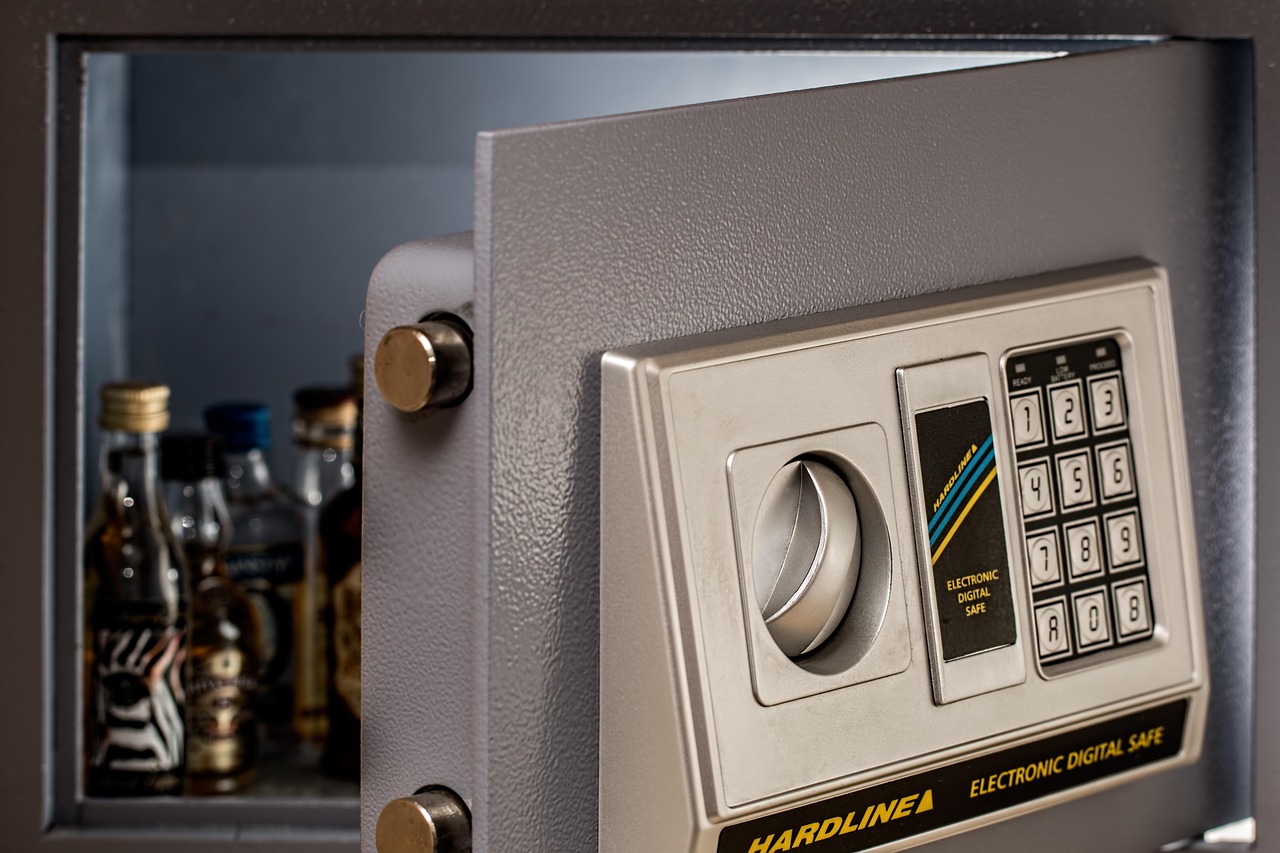To safely observe monarch butterflies, approach them quietly and gently. Avoid direct handling unless necessary. If you must hold one, ensure your hands are clean and dry, and never touch their wings or body to prevent damage. Observing from a distance is best for their wellbeing.
Monarch butterflies are one of the most recognizable and beloved species in North America. They are known for their striking orange and black wings, as well as their incredible migratory patterns. Each year, millions of monarchs travel thousands of miles from breeding grounds in Canada and the United States to their wintering sites in Mexico. Understanding how to safely observe these beautiful creatures is essential for their conservation and your enjoyment.
While observing monarchs, it is important to remember that they are delicate creatures. Their wings are covered with tiny scales that can easily be damaged. Additionally, the oils and residues from human skin can harm them. Therefore, practicing safe handling techniques is crucial when interacting with these butterflies.
Understanding Monarch Butterflies

Monarch butterflies undergo a fascinating life cycle consisting of four stages: egg, larva (caterpillar), pupa (chrysalis), and adult. Each stage presents unique opportunities for observation and learning. Below is a brief overview of each stage:
| Stage | Description | Duration |
|---|---|---|
| Egg | Laid on milkweed plants, the eggs are small and round. | 3-10 days |
| Larva (Caterpillar) | Hatching from the egg, caterpillars feed on milkweed leaves. | 10-14 days |
| Pupa (Chrysalis) | The caterpillar forms a chrysalis where it transforms into a butterfly. | 7-10 days |
| Adult | The fully formed butterfly emerges and begins its journey. | Up to 9 months |
Each stage of the monarch’s life cycle provides an opportunity for education and appreciation. Observers can learn about the importance of milkweed as a host plant for monarch larvae. Additionally, understanding their migratory patterns highlights the need for habitat preservation along their migratory routes.
Best Practices for Observation
When observing monarch butterflies in their natural habitat, consider following these best practices:
- Choose a quiet location where butterflies are known to frequent.
- Wear light-colored clothing to avoid startling them.
- Avoid using strong scents or perfumes that may deter butterflies.
- Use binoculars or a camera with a zoom lens to observe from a distance.
- If you wish to take photographs, do so without flash to avoid distressing the butterflies.
By employing these practices, you can enjoy observing monarch butterflies while minimizing any negative impact on their behavior or habitat. Remember, your role as an observer is vital in supporting their survival and promoting awareness about their conservation needs.
In addition to these practices, it’s important to be aware of the local laws and regulations regarding wildlife observation. Some areas may have specific guidelines to protect monarchs and their habitats. Always ensure your actions align with these regulations to contribute positively to conservation efforts.
The Importance of Habitat for Monarch Butterflies
Habitat plays a crucial role in the survival and reproduction of monarch butterflies. To thrive, these butterflies require specific environments that provide the necessary resources such as food, shelter, and breeding grounds. Understanding the importance of these habitats helps in the conservation efforts aimed at protecting monarch populations.
Essential Components of Monarch Habitat
Monarch butterflies rely on several key components within their habitats:
- Milkweed Plants: These plants are the primary food source for monarch caterpillars. Female monarchs lay their eggs exclusively on milkweed, making it critical for their lifecycle.
- Nectar Sources: Adult monarchs feed on nectar from various flowering plants. Diverse flowering species support their energy needs during migration and breeding.
- Sunlight: Monarchs require sunny spots to warm their bodies and maintain energy levels. Open areas with direct sunlight are essential for their activity.
- Shelter: Areas with vegetation provide shelter from predators and harsh weather conditions. Dense shrubs or trees can offer protection while resting.
Threats to Monarch Habitats
Several factors threaten the habitats of monarch butterflies, making it vital to address these issues through conservation efforts:
- Pesticide Use: Widespread use of pesticides in agriculture can eliminate milkweed and flowering plants, directly impacting monarch populations.
- Urban Development: Expansion of urban areas often leads to habitat destruction. As natural landscapes are replaced with concrete, monarchs lose vital breeding and feeding grounds.
- Climate Change: Changes in climate can alter migration patterns and disrupt the timing of life cycles. Extreme weather events can also destroy critical habitats.
- Invasive Species: Non-native plants can outcompete native milkweed and nectar sources, reducing the availability of essential resources for monarchs.
Creating Monarch-Friendly Spaces
Individuals can take steps to create environments that support monarch butterflies. Even small changes in gardens or community spaces can make a significant difference. Here are some suggestions:
- Plant Native Milkweed: Incorporate various species of milkweed into your garden to provide food for caterpillars. Common milkweed (Asclepias Syriaca) is a popular choice.
- Add Nectar Plants: Include a variety of nectar-producing flowers that bloom at different times of the year to provide a continuous food source for adult monarchs.
- Avoid Chemicals: Reduce or eliminate the use of pesticides and herbicides in your gardening practices to create a safe environment for butterflies.
- Create Shelter: Plant dense shrubs or leave some areas untended to provide natural shelter for resting butterflies.
Participating in Local Conservation Efforts
Joining local conservation initiatives can enhance efforts to protect monarch habitats. Many organizations focus on habitat restoration, education, and advocacy. Here are ways to get involved:
- Volunteer: Participate in habitat restoration projects organized by local conservation groups.
- Educate Others: Share knowledge about the importance of monarchs and their habitats with friends, family, and community members.
- Advocate for Policy Changes: Support policies that protect natural habitats and promote sustainable agricultural practices.
By creating monarch-friendly spaces and participating in local efforts, individuals can significantly contribute to preserving these remarkable butterflies. Each action counts towards fostering environments where they can thrive and flourish.
The Role of Citizen Science in Monarch Conservation
Citizen science initiatives enable individuals to contribute valuable data towards understanding monarch butterfly populations and their migratory patterns. Engaging in citizen science allows community members to play an active role in conservation while enhancing their observational skills.
Common citizen science projects related to monarchs include:
- Migration Monitoring: Participants track and report sightings of migrating monarchs during their seasonal journeys.
- Caterpillar Counts: Collect data on the number of caterpillars observed on milkweed plants in specific areas.
- Tagging Programs: Involvement in tagging adult monarchs helps researchers track their migratory paths and survival rates.
These contributions are vital for gathering information necessary for effective conservation strategies. Engaging with citizen science also fosters a deeper appreciation for nature and encourages ongoing learning about this fascinating species.

Safe Handling Techniques for Monarch Butterflies
When it comes to observing monarch butterflies, safe handling techniques are paramount. While it is best to observe these creatures from a distance, there may be situations where gentle handling is necessary, such as during educational activities or research. Understanding the proper methods can help ensure the butterflies’ safety and wellbeing.
Why Handling Should Be Minimal
Monarch butterflies are delicate insects. Their wings are covered with tiny scales that can be easily damaged. Additionally, oils and residues from human skin can affect their ability to fly. For these reasons, it is essential to minimize direct contact with monarchs whenever possible.
When Handling is Necessary
If circumstances require handling a monarch butterfly, follow these steps to ensure their safety:
- Prepare Your Hands: Make sure your hands are clean and dry. Avoid using lotions or chemicals that could transfer to the butterfly.
- Approach Calmly: Move slowly and quietly to avoid startling the butterfly. Sudden movements can cause stress and confusion.
- Use a Container: If you need to transport a butterfly, use a small, breathable container like a mesh bag or an open box lined with soft paper. This allows for ventilation while preventing harm.
- Avoid Touching Wings: If you must hold the butterfly, do so by gently grasping the edges of the thorax (the middle section of the body), avoiding any contact with the wings.
- Release Carefully: When returning the butterfly to its habitat, gently open the container and allow it to fly away on its own. Do not force it out.
Educational Interactions with Monarchs

Many educational programs and workshops involve observing or handling monarch butterflies. These activities can foster a greater understanding of their ecology and conservation needs. However, they should always prioritize the safety and comfort of the butterflies.
Participating in Workshops
When participating in workshops or educational events that involve monarchs, consider the following:
- Choose Reputable Programs: Select workshops led by knowledgeable educators or organizations experienced in butterfly conservation.
- Follow Guidelines: Adhere to all instructions provided by facilitators regarding handling and observing butterflies.
- Ask Questions: Engage with instructors to learn about the lifecycle, behavior, and conservation status of monarchs. This helps deepen your understanding and appreciation.
The Role of Technology in Safe Monarch Observation
Advancements in technology have made it easier to observe monarch butterflies without direct contact. The use of various devices enhances the experience while ensuring safety for both observer and butterfly.
Using Technology for Observation
Here are a few ways technology can facilitate safe observation:
- Cameras with Zoom Lenses: High-quality cameras allow observers to capture stunning images of monarchs from a distance without disturbing them.
- Smartphone Apps: Numerous apps assist in identifying butterfly species and tracking migration patterns. These tools enhance the educational aspect of observation.
- Live Streaming: Some organizations set up live streams of monarch habitats, allowing people to watch their behaviors in real-time without any physical interaction.
The Impact of Handling on Monarch Health
Research indicates that improper handling can have detrimental effects on monarch butterflies. Understanding these impacts can reinforce the importance of safe practices.
Potential Consequences of Improper Handling
Improper handling can lead to several negative outcomes:
- Wing Damage: Physical damage to wings can impair flight ability and reduce survival rates.
- Stress Response: Handling can induce stress in butterflies, affecting their feeding and reproduction.
- Disease Transmission: Direct contact with humans may increase the risk of disease transmission, further impacting butterfly populations.
Promoting Healthy Observational Practices
The ultimate goal is to foster a healthy environment for monarchs while allowing people to engage in meaningful observation experiences. Through education, responsible handling, and technology, individuals can enjoy observing these beautiful insects while ensuring their safety and wellbeing.
By adhering to safe handling practices and promoting awareness about the importance of habitats, everyone can contribute positively to the conservation of monarch butterflies. Each small action taken can lead to significant improvements in their populations and ecosystems.
Encouraging Community Involvement in Monarch Conservation

Community involvement is essential for the success of monarch butterfly conservation efforts. By fostering a collective commitment to protecting these beautiful insects, communities can create environments that nurture monarch populations. Here are some strategies for encouraging community participation:
- Educational Workshops: Organize workshops that teach participants about the lifecycle of monarchs, their migration patterns, and the significance of their habitats. These workshops can include hands-on activities, such as planting milkweed.
- Community Gardens: Establish community gardens that focus on native plants, including milkweed and nectar sources. This not only creates a habitat for monarchs but also strengthens community ties through collaborative gardening efforts.
- Citizen Science Projects: Promote involvement in citizen science projects focused on monarchs, such as tagging and monitoring programs. By participating, community members can contribute valuable data while learning more about butterflies.
- Awareness Campaigns: Launch campaigns to raise awareness about the threats facing monarchs and the importance of their conservation. Utilize social media, local events, and educational materials to spread the message.
Resources for Monarch Butterfly Enthusiasts
There are numerous resources available for those interested in learning more about monarch butterflies and how to help with their conservation. These resources provide valuable information and support for individuals and communities alike:
- Books and Guides: Many books focus on butterfly identification, ecology, and conservation practices. Look for titles specific to monarch butterflies for in-depth knowledge.
- Online Platforms: Websites and forums dedicated to butterfly enthusiasts offer a wealth of information, including identification tips, habitat restoration advice, and opportunities for volunteering.
- Local Conservation Organizations: Many local organizations work specifically on monarch conservation and can provide support, resources, and opportunities for involvement.
- Educational Videos: Online platforms such as YouTube host numerous documentaries and educational videos about monarch butterflies, their habitats, and conservation efforts.
Final Thoughts
Observing monarch butterflies can be a deeply enriching experience when approached with care and respect. By practicing safe handling techniques, fostering healthy environments, and getting involved in community conservation efforts, individuals can play a crucial role in ensuring the survival of this iconic species. Monarchs not only hold ecological significance but also captivate our imaginations with their beauty and resilience.
As we engage in observing these magnificent butterflies, it is important to remember that our actions directly impact their health and populations. Whether through careful observation or active participation in conservation initiatives, every effort counts towards creating a future where monarch butterflies continue to thrive. Together, we can protect their habitats and promote awareness of their plight, ensuring that generations to come can enjoy the sights of these incredible creatures in the wild.
In summary, safe handling practices combined with community involvement, education, and technological advancements create a holistic approach to observing and conserving monarch butterflies. As stewards of the environment, let us take responsibility for these fragile ecosystems and work collaboratively toward a sustainable future where both people and butterflies flourish.
